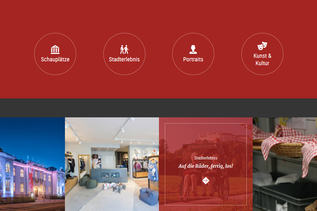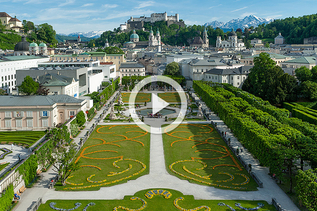
Kapuzinerberg
La cima del Kapuzinerberg, que se eleva a 640 m sobre el nivel del mar, se encuentra en la orilla derecha del Salzach. El denso bosque que rodea la cumbre de la montaña es un espacio recreativo popular para los excursionistas y deportistas de la ciudad. Los senderos conducen pasto capillas hacia el monasterio de los capuchinos y el Franziskischlössl.
Desde la calle Linzer Gasse, el camino lleva a través de la puerta de Francisco, pasando por once capillas del Vía Crucis, hasta el monasterio capuchino. El monasterio es hoy el primer noviciado común de todas las provincias capuchinas de habla alemana. Junto al monasterio se encuentran la iglesia del monasterio y la iglesia de Imberg, así como el Hettwerbastei (punto de vista) con una vista única hacia la fortaleza de Hohensalzburg y la ciudad vieja.
La vieja muralla del Kapuzinerberg, de 400 años, o muralla defensiva, comienza en la puerta de Felix y rodea el monasterio capuchino, extendiéndose por toda la caída del monte hacia el oeste, sur y este. En el extremo norte de la muralla se encuentra el "Franziski-Schlössl", construido en 1629 bajo el príncipe arzobispo Paris Lodron. Originalmente diseñado como una construcción defensiva pura, desde 1849 ha funcionado como un restaurante, que desde entonces se ha convertido en un popular destino turístico. El camino hacia el Franziski-Schlössl se extiende a través de encantadores senderos en el bosque o junto a la muralla defensiva.
Junto al Franziski-Schlössl, también es conocido el "Paschinger-Schlößl" en Kapuzinerberg 5. Desde 1919 hasta 1934, aquí vivió el famoso escritor Stefan Zweig. Una escultura sobre la villa recuerda al famoso escritor. Otra escultura, un poco más arriba en la montaña, muestra al posiblemente más famoso genio de la ciudad: Wolfgang Amadeus Mozart.
Para los escaladores, la empinada pared norte del Kapuzinerberg ofrece la mejor oportunidad para ascender la montaña. El uso de la ferrata “City Wall” está permitido de julio a marzo. En los meses restantes, las actividades de escalada no pueden realizarse debido a la nidificación de especies de aves. Los entusiastas del deporte pueden entonces disfrutar de los conocidos senderos urbanos sobre el Kapuzinerberg como un espacio alternativo de recreación cercana.
Con un poco de suerte, durante una caminata en el Kapuzinerberg puede ver a los rebecos que allí viven. Esta colonia de rebecos en medio de la ciudad es única en el mundo y se siente excepcionalmente bien en el Kapuzinerberg, lleno de rocas. El guardabosques de la ciudad responsable en Salzburgo es además cazador urbano y se ocupa del bienestar de los animales.
- por el Imbergstiege desde la calle Steingasse (Ruta)
- desde la Franziskustor en Linzergasse (Ruta)
- desde la Fürbergstraße en el noreste sobre el camino Dobler (Ruta)







































